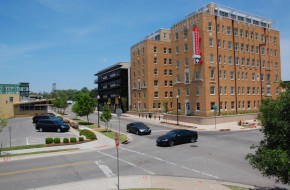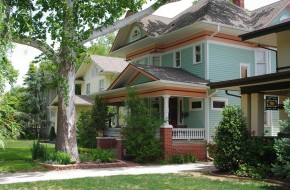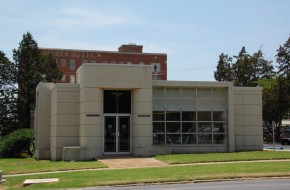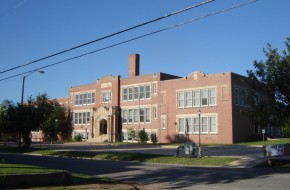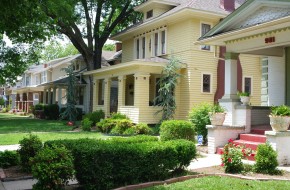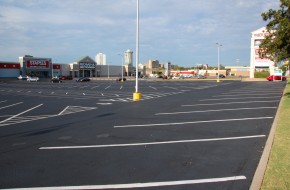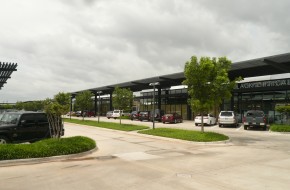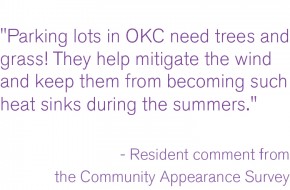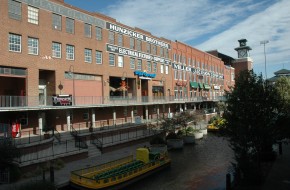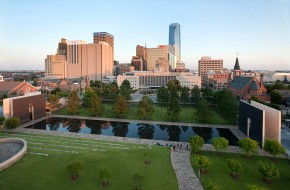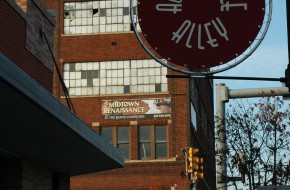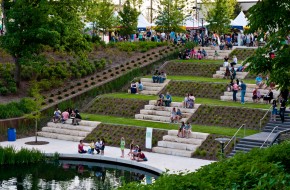Our Situation
Preservation of Buildings
Every part of a city contributes to its character and image. Some places have special importance because of their historic and symbolic roles in the city, visibility, function in the everyday lives of citizens, or distinctive physical qualities. Preserving these places helps maintain a strong community image, produces economic growth, and sustains neighborhoods. It also helps maintain a degree of historic or architectural continuity with the city’s growth and development, continuing the story of our city.
Public Awareness. The preservation process begins with increasing public awareness and appreciation of the built environment. Our city is still relatively young and our historical time frame is short. Often property owners think that removing an existing building and starting over involves less trouble and expense, or that older structures cannot be upgraded to meet current codes or energy efficiency standards. Owners and even neighbors also may view buildings as individuals, rather than as part of a larger neighborhood context. Despite the successes of great places like Automobile Alley, where significant buildings have been put to new uses that their original owners could not have conceived, we still tend to value the new over the old, and do not always see the benefits of maintaining our existing building fabric.
Incentives, educational efforts, and regulatory encouragement for building reuse can help to rebalance these perceptions. Current development policies and regulations appear to make it easier or more predictable to develop at the city’s edge rather than in areas with existing resources and infrastructure.
Community Appearance
Community appearance has direct impacts on both the likelihood that existing significant buildings will receive new investment and the satisfaction of existing residents with their neighborhoods.
Detrimental Components. planokc’s Community Appearance Survey was the first step in understanding what residents view as valuable and detrimental to community. In liveokc, we discuss the effects of deteriorating buildings on neighborhood sustainability. Survey results indicate that front yards, street corridors or parking lots also make strong first impressions that can positively or negatively influence the future direction of a neighborhood. The “one bad property” on a block can discourage investment or maintenance on surrounding properties, resulting in a cycle of decline.
Standards for Building and Property Maintenance. Unfortunately, “good appearance” means different things to different people, and people have different sensitivities to their physical environment and differing amounts of resources to improve it. We lack baseline standards or specific expectations for building and property maintenance. The enforcement of those regulations we have is not an adequate deterrent to property neglect. The City cannot effectively induce absentee property owners to maintain their properties. The boarding of windows to secure abandoned properties adds to the poor appearance of a neighborhood and the perception of disinvestment. These are all challenges that the City must conquer in order to successfully improve community appearance.
The Urban Landscape
Urban landscaping is a crucial contributor to an attractive community image. greenokc discussed the importance of an urban forestry program with revised landscape ordinances.
Landscape Enhancement. Chapter Two discusses the ability of landscape to minimize land use incompatibilities. Landscaping must also be seen from the perspective of creating an enriched urban environment. The Community Appearance Survey showed that citizens place a strong value on landscaping, trees, sidewalks, and pedestrian features. Citizens and developers are also increasingly aware of the value of trees and their ability to shade, provide pedestrian comfort, contribute to urban design, moderate the micro-climate, and attract customers.
Sustainable Landscape.In Oklahoma City’s hot, relatively dry climate, sustaining an attractive landscape requires choosing proper materials. Landscaping often defaults to turf and other non-native materials that require a good deal of water and ongoing maintenance. And maintenance is critical to appearance. Maintenance responsibilities in highly visible situations, like major street corridors, are unclear and often neglected. Design and placement of landscaping to avoid or minimize conflicts with utilities, both above and below ground, is another significant factor in providing attractive landscaped environments with continuity and substance.
Heritage and Culture
Calling attention to and investing in the city’s heritage and culture builds interest in the process of building Oklahoma City. It enriches the experience of living in Oklahoma City, telling visitors about the place and rooting residents in the context of their community. We generate economic opportunity by maintaining and enhancing the thematic character of different parts of the city.
Understanding Heritage. Oklahoma City residents are demonstrating a growing interest in understanding and communicating our heritage and culture. Residents also appreciate being part of neighborhoods with distinctive characteristics. We can continue to build on these foundations.
Connectivity between residents and history. New households, many of which are part of the so-called Millennial generation, are attracted to the urban qualities of the central city area, making it a hub of new business and creativity. Greater knowledge of the history and culture of our capital city could add new levels of meaning to this experience. A greater connection is needed between the city’s cultural assets and its residents to the great benefit of both.
Heritage and culture belong to all of Oklahoma City’s residents, and all of our economic, racial, and ethnic groups are indispensable parts of our story. But with limited transportation options and socioeconomic separations, many citizens, including the youngest and poorest of our community, lack access to the wide array of cultural facilities located throughout the city. This denies them knowledge and appreciation for the possibilities attainable through arts and culture.
Distinctive districts and neighborhoods. The distinctiveness and identity of different districts and neighborhoods also presents many opportunities. Oklahoma City has many distinct cultural regions, including nine special design districts, nine historic preservation districts, and four individual historic preservation landmarks. In our expansive city, these special districts add texture and orientation, as well as places to enjoy and experience. Some of these areas have taken advantage of their qualities and created brands, which we can define as packages of expectations. In some cases, these brands are reinforced in the public environment. More work needs to be done in connecting these areas into a network of assets, reinforcing and marketing each other, and considering new districts for inclusion in the network of special places.
Urban Design
Most people gravitate to places that are attractive, offer quality and activity, and make them happy and pleased to be there, or move them emotionally or spiritually. Some great places are carefully crafted, and combine various design disciplines with keen observation, community involvement, and sometimes even social science. The Bricktown Canal, Myriad Gardens, and the National Memorial provide excellent examples of these types of popular people environments. Others just happen from small acts or the collective work of different people at different times.
Defining an effective public realm. Ultimately, creating great places involves more than just a building; it includes creating a public realm that may include walkways, landscaping, public spaces to meet or enjoy, shapes and edges, public art, street furniture, water, and other ingredients. It is very difficult to legislate good places for people. Some well-intentioned projects fall short of expectations or do not age well; others succeed seemingly (but not actually) by accident. In our urban design environment, we should strive for a quality that is hard to describe but that we recognize when we see it. The key word here is striving, focused on creating projects that, even when they seem routine, contribute something to the beauty and welfare of our city.
Aspirational Design Standards. Like many cities, though, the standards we have are minimal, not aspirational, and do not often lead to successful places. We lack a mechanism that directs or even encourages developers to strive for something better. So new developments tend to look the same and many of our urban, suburban, and rural areas lack a defining character. New developments, especially big box retailers, are built to national standards with no local sense of place or character, while at the same time, older buildings and districts with human scale and architectural character sometimes wither.
Inconsistent Design Standards. The City has established urban design and historic districts within our zoning ordinance to attempt to capture and maintain the fabric of distinctive places. Areas beyond these zoning districts do not have mechanisms for review and enforcement of design issues.
Treatment of the Public Realm. Finally, the largest part of our public realm–our public streets–is in most cases far from enriching. Streets and transportation are one of our most pervasive and visible land uses in the urbanized area, but rarely get the design treatment and care that they deserve. Signs, utility lines, transformers, equipment, street lights, and many other elements of the street environment are located in utilitarian ways, but their visual quality and how they can neatly be integrated into the streetscape is rarely a consideration. The traditional approach to public infrastructure gives too little consideration to the urban environment or neighborhood character. “Standard engineering practice” for infrastructure rarely explores the nexus between functionality and visual quality.
























 Download PDF
Download PDF